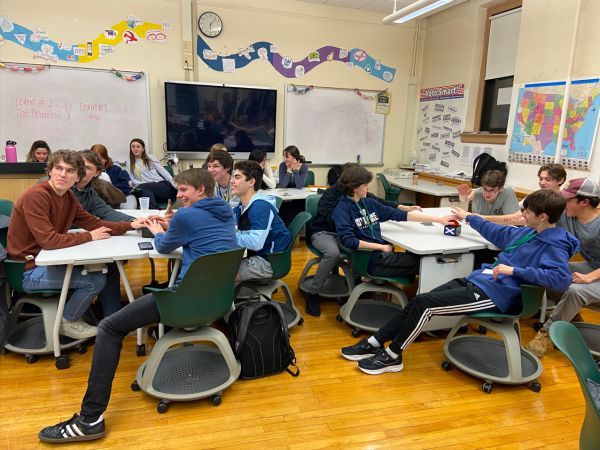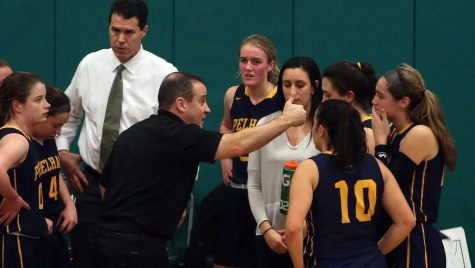Tech Costs Soaring with Virtual Learning
January 19, 2021
The average student-use chromebook comes at a price of between $200 and $400, and is considered to be up-to-date for eight years. At that rate, for a student body of just over 900 pupils, the student hardware cost for a single graduating class over the course of a middle and high school education is well over $60,000, all for tech that cannot be reused outside of that class’s time in PMHS. At such a high price, technology fetches a large portion of the school’s budget, claiming a budget of over $500,000 for the 2018-2019 school year. Tech costs have been an issue since the beginning of its integration into school curriculum, but as the cost of personal technology, such as laptops, begins to outpace the cost of school technology, such as large digital libraries and electronic teaching solutions, the question becomes one of how the district manages its dealings with Big Tech.
There is a comprehensive set of rules and policies that are observed when drafting a yearly budget. James Hricay, Assistant Superintendent for Business at PMHS, described the process.
“[The PMHS Business Office] looks at how many students we have… Looks at what our potential revenues are… taxes… state aid… What we want to do is make sure the tech department has the resources they need to accomplish what their job is going to be. Mr. Sebalos knows his budget frontward and backwards, he knows what those challenges are… we communicate regularly to make sure he can maintain those goals,” Hricay said.
John Sebalos, the director of technology at PMHS, and has taken on a significant task this year. With COVID-19 sweeping school districts across the world with particular fury, technology has been the crutch (or perhaps the sword, per certain testimony) that schools have fallen upon. Distance education has provided a new frontier for businesses and school administrators alike, fostering an unlikely alliance between the two groups as each rushes to provide students with technology resources. Chromebooks, virtual learning environments, and on-the-spot tech support have been crucial in preserving valuable years of education for students caught up in the throes of the novel coronavirus. The expenses faced here have been nothing short of a surprise and the question seems to linger in the air: what will become of all the resources allocated to distance learning once the return to standard classroom education is complete?
Sebalos has spearheaded the integration of technology into the school’s budget in his time here. A former elementary school teacher and education technology specialist, Sebalos wasn’t far from his roots when the pandemic cast aside his plans for the younger learners in the Pelham School District.
“We were trying to expand our access to elementary schools and teachers pre-COVID,” Sebalos said.
He also shared his thoughts on the COVID-19 response.
“This is not a permanent solution to anything… Being with people is very important to how we learn, interact, collaborate with each other,” Sebalos stated.
If indeed none of the technologies implemented since March of 2020 have been ‘permanent’, what will become of them as the virtual learning environment becomes increasingly unnecessary?
The US generated 6,918 kilotons of E-waste in 2017, and that number increases with every new iPhone and Microchip. At 21kg of E-waste per capita, our nation is among the highest producers of high-voltage refuse in the world. The rising costs of technology have been unkind on consumer wallets, and with the damage done to our environment for marginal, and, as some would say, trivial gain, E-waste is rapidly rising to the upper echelons of threats to the planet. And thus, the PMHS tech department now tackles global issues with all the tact that they can muster, as Pelham carefully considers its options in the face of a looming financial behemoth.










